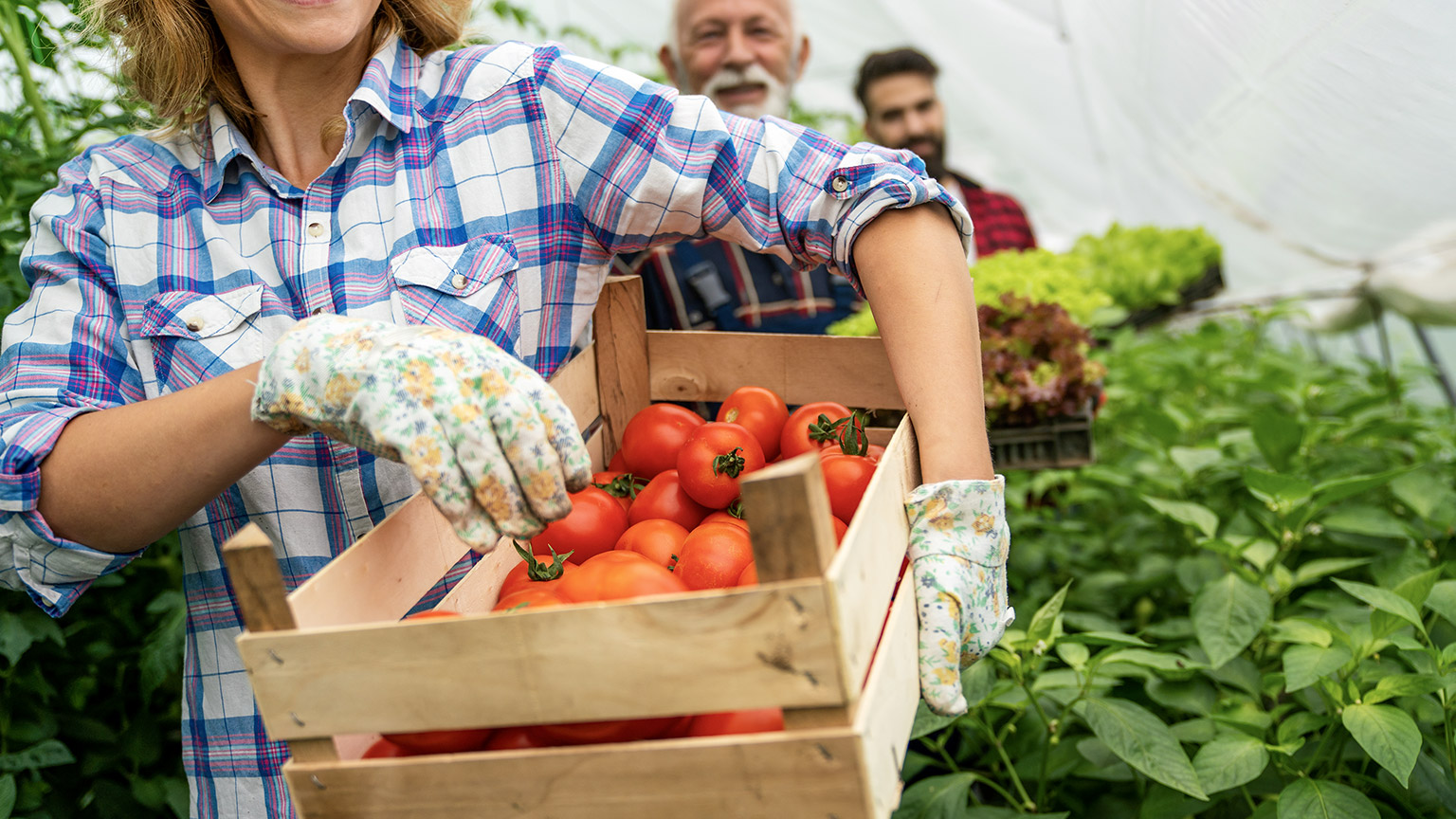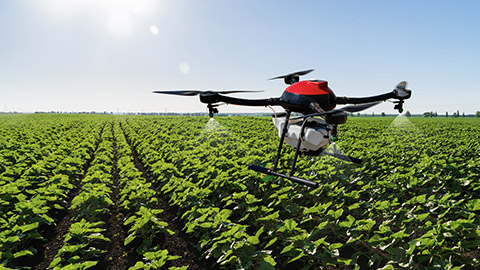
What is drone technology?
Drones are small, unmanned airborne vehicles which are controlled by a “pilot” on the ground, or sometimes by a computer running AI (artificial intelligence) software. The availability of cheap, small and easy-to-use consumer drones has led to their use in many other areas too, and food production is one example of this.
Demand for food is increasing and the pressure on land to produce more and more food is becoming a serious problem. Drones, combined with sophisticated software, are one way to help farmers manage the productivity of their land, reducing the amount of inputs (e.g. fertilisers, pesticides) they need, cutting costs whilst reducing the impact on the environment at the same time.
What can they do?
Agricultural drones are able to monitor areas of planted crops, photographing problem areas for more analysis by AI software. They can also keep track of livestock on large farms, Some Australian cattle stations can cover thousands of hectares and consist of many fields, water sources, gates and kilometres of fencing all containing thousands of cattle. In such cases, a drone is a very cheap, and extremely effective way to see what is going on.
Drones can be equipped with thermal cameras as well as optical cameras, which is very useful to locate missing cattle and which can zoom in on critical instrument readings on the farm (recording moisture levels, temperatures etc.). They can help to find broken fences which need to be repaired and check on calving season.
(Cattle Station Management – Drone World Australia, n.d.)
On farms producing crops, agricultural drones are able to check for areas of weeds, check damaged or unhealthy plants, monitor yields in different areas of the farm etc.
Agriculture Drones: Drone Use in Agriculture and Current Job Prospects, 2019)
Drone AG is a UK company which offers high tech solutions to farmers, using drones. They offer automated drone crop scouting, automated crop spraying and advanced field mapping
(Drone Ag Limited, n.d.)
How does this affect the hospitality industry?
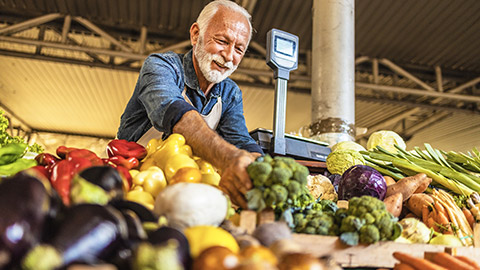
All these factors improve what the farmer is able to do – healthier crops, bigger yields, improved land management, improved livestock management, more targeted irrigation and chemical inputs – a win-win situation for everyone as the environmental impact is minimised and costs are reduced. This helps the hospitality industry in (at least) two ways:
- An important food trend for many consumers in the 2020s is provenance and sustainability of ingredients. For a food business, being associated with healthier and less damaging farming practices (i.e. sourcing ingredients from more sustainable suppliers) is important to promote their business as environmentally aware, and part of the drive to reduce artificial inputs into farming and to reduce our impact on the environment.
- Chemical inputs are not only potentially damaging to the environment if over-used, but also very costly to the farmer. These extra costs are, inevitably, passed on through the supply chain to the final consumer. Reducing the cost of inputs and increasing yields and productivity through more targeted application of inputs through the use of fast and accurate drone technology will keep commodity prices lower, ultimately benefiting the food business and the consumer. (USA, 2018)
Exercise 9
Is this happening in New Zealand? Where? What product? What scale of operation? What are the advantages of using this kind of technology for these specific New Zealand operations? Share your findings with your classmates.
Self-Directed Learning
Find examples to include in your Task 2 section on Food Production. Remember you don’t have to write about ALL the topics discussed in class – choose one key topic, and maybe link relevant other topics briefly.
Read in more detail and research the topics on the page “Other Food Production Influences”.
Watch video here.
Identify 1 topic that relates to the hospitality industry – impacts and benefits of keeping up with consumer trends.

What is “Ethical Food Production”?
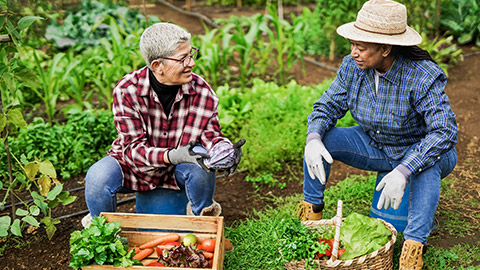
The study of ethics poses the question “is this the right thing to do or not?” and is a serious philosophical field of study. When we apply this concept to the topic of food production, there are three key areas we can examine to ask the question: “ethical or unethical?”
- Welfare of the workers involved in food production
- Trade
- Animal welfare
Food Citizenship
This is the idea that consumers are not separate from the food system, but a key part of it. Consumers have a great deal of power over the production of food – food producers must supply the food that is demanded to be profitable. Research has shown that use of the word “citizen” to replace the word “consumer” makes people more likely to act collectively and be more socially aware. Being part of the food system gives “citizens” a sense of responsibility to what food is produced, and how it is produced.
(Food Ethics Council, 2019)
Workers’ Rights and Safety
working conditions in rural areas tend to be difficult, precarious and hazardous.fao.org, n.d.
The workers often have no written contracts, are employed on a seasonal or casual basis and have little protection. They are often subjected to long hours of work with low and unpredictable incomes.
In addition to unfavourable incomes, agricultural workers are subject to many hazards in their work place, resulting in fatalities or near-fatalities, injuries and occupational illnesses as a result of operating heavy machinery and equipment, lifting heavy weights, working outside in harsh weather conditions, working with animals, exposure to dangerous chemicals, noise and infectious agents.
At risk groups of workers include many migrants, seasonal workers, elderly, women and children.
(fao.org, n.d.), (ethicaladvocate.com, 2019)
Example: Tomato pickers in Spain
According to www.ethicalconsumer.com, there are vast areas of greenhouses growing peppers, tomatoes and other vegetables in the Almeria region of southern Spain. Spain has recently had a rapid increase in unauthorised migration, and has “one of the largest informal economies in the European Union”.
(Arango, 2019)
Ethical Consumer claims that these greenhouses are “surrounded by improvised shelters”, which are overcrowded, have no running water and are occasionally demolished by the local authorities. They also claim that workers are often paid as little as €32 for an 8 hour day.
(ethicalconsumer.com, 2021)
Exercise 10
As of April 2021, the legal minimum hourly wage in Spain is €7.04/hour, and their labour laws state a maximum working week of 40 hours.
- What is the equivalent of Spain’s minimum wage in NZD? (Click this link to calculate.)
- What is the minimum a worker should be paid for 8 hours work in Spain?
- What percentage of the minimum wage are these workers alleged to be paid?
- The New Zealand minimum wage is now $20/hour. If you were being paid the percentage of the minimum wage as the workers in Spain, how much would your hourly wage be?
- How would you feel if you were in this situation?
The vegetables grown in these greenhouses are destined for food businesses and supermarkets and wholesale vegetable suppliers across Europe. In addition to below-minimum-wage pay rates, these workers are exposed to chemicals sprayed on the crops while they are working and are not provided with the proper PPE (personal protective equipment). Despite growing concerns for these workers over the last 20 years, it is claimed workers have been dismissed for striking and are physically, verbally or legally prevented from joining a union.
Self-Directed Learning
- Find other examples, from different regions, where agricultural workers are subjected to poor working conditions.
- Most food businesses aim to get the lowest prices possible for their commodities – vegetables, fruit, meat etc. How does this practice affect the situation of these farm workers?
- What would be the effect on the hospitality industry of farmers/growers paying at least minimum legal wage and providing safe working conditions for their workers?
Continue working on Task 2 (2) Food Production.
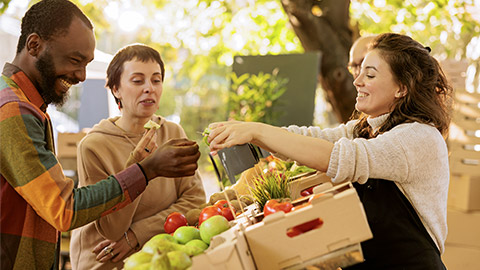
- 2 billion people live on an income of less than US$2 a day.
- West African farmers produce two-thirds of the world’s cocoa, yet earn only US$0.50 a day.
- 1.8 million children work on cocoa plantations on the Ivory Coast.
(TEDx Talks, 2015, 03:15–05:21)
These are a few facts showing the vast difference between what farmers and farm workers in some developing nations can earn compared with what end-consumers in developed countries pay for the same commodities.
As we have already discovered, behaving ethically is about doing what is morally right, and many people in developed nations are concerned about fairness in the world food trading system.
Exercise 11
What are the implications for hospitality businesses of increasing consumer awareness of the ethics of food trading? Think about how it could affect a small food business – what could you, or should you, do in response? Can you make positive choices which benefit your business?
Write your ideas in your journal.
Fair Trade Movement

One strong movement which has been growing since its beginning in the 1940s is the Fair Trade movement, which was started to encourage a fair and reasonable income for growers and farmers in developing countries. Today there are several organisations which operate around the world to this end, including World Fair Trade Organisation (WFTO), Fairtrade International (FLO International), Fair Trade USA and European Fair Trade Association.
These are the 10 principles of the WFTO, and each of these addresses different aspects of food ethics.
Principle Four – Fair Payment
Looking at one example of their work, Principle Four concerns fair payment for food producers, with the aim to always pay “the Local Living Wage”, including “Fair Prices, Fair Wages and Local Living Wages”
(WFTO, 2021)
What is a “Living Wage”?
The remuneration received for a standard workweek by a worker in a particular place sufficient to afford a decent standard of living for the worker and her or his family. Elements of a decent standard of living include food, water, housing, education, health care, transportation, clothing, and other essential needs including provision for unexpected events.Global Living Wage Coalition, 2018
Living incomes are important for the sustainability and viability of global food supply chains. If crop producers cannot earn enough money to have a decent standard of living for their families and their workers they will not be able to continue long-term.
Fairtrade International is another organisation which helps promote living incomes and living wages for producers in developing countries. As an example, Fairtrade International pays $2,400 per tonne of cocoa to Ivory Coast cocoa producers, which is nearly $300/tonne more than the official government minimum price. They pay an additional $240/tonne on top of this directly to the farmer to spend on projects on their farms and in their communities – in 2017 this resulted in an investment of nearly $43 million.
(Fairtrade International, n.d.)
Fairtrade Consumer Price Comparison
The effect of higher prices being paid to producers inevitably results in a higher price for the commodity for the consumer:

Self-Directed Learning
Research other fair trade products available in New Zealand. Do they show the same price premium as the cocoa example?
Use this link to the recipe for Mary Berry’s Chocolate Sponge, (which is 8 portions).
- Calculate the difference in cost of the cocoa component using Nestlé Baking Cocoa and using Trade Aid Organic Cocoa.
- Do you think the extra cost is justifiable? Why/why not?
Continue working on Task 2 (2) Food Production.

Ever-increasing demand for animal products has led to more intensive methods for producing meat. Meat consumption increased by 58% in the years from 1998 to 2018, with nearly half this increase through increased personal consumption of meat products. This increased consumption is driven by higher incomes, particularly in developing countries.
Note: OECD definitions of developing and developed countries. Source: OECD
Source: OECD
Exercise 12
For each graph, answer the following: “What is this figure trying to tell me?”
Figure 1 is telling me…
Figure 2 is telling me…
The effect of increased demand for meat
Increased demand has transformed meat production into a modern and industrialised practice. In the USA, concentrated animal feeding operations (CAFOs, also referred to as “factory farms”), in which large numbers of animals are kept confined for long periods of time, have become the standard way of producing meat, a practice which has spread to many other countries too.
(Globalized World: Modern Meat Production, n.d.)
This production method is designed to grow animals quickly and economically, but often in poor living conditions. The result is cheap meat, but it raises questions of the rights of animals and their ethical treatment.
Other practices to encourage maximum production are also used, particularly in the USA. These include the routine use of hormones to promote faster growth, and antibiotics administered to healthy animals to prevent sickness. Antibiotics used in farmed animals and which are also used in human medicine (such as tetracyclines), accounts for most of the amount of that antibiotic used. This overuse has consequences leading to antibiotic-resistance and increasingly difficult to treat superbugs in humans.
(The Financial Times, 2021).
Trends
In response to this crisis, new regulations in China and the USA aim to cut antibiotic use and the European Union will ban the preventative use of antibiotics from 2022. McDonald’s is studying how much use of these important antibiotics there is in its supply chain, and intends to limit their use, and US chicken farmers have also reduced the amount of antibiotics used in their production.
(The Financial Times, 2021)
Self-Directed Learning
Research and note some other trends in the way meat is produced and/or consumed which relate to increased awareness of the issue of animal welfare. Remember to save any links you find to useful information.
Complete the Food Production section of Task 2. (Part 2.)
Imagine you are opening a new café in an affluent suburb where many people are concerned with food quality and sustainability, and are prepared to pay extra for ethically sourced food.
Exercise 13
Discuss some choices you could make about the type of food you put on your menu and where you would source your ingredients from. Think about the whole supply chain, from the producer to your customer (growing, harvesting, transporting, storing, preparing, marketing, serving etc.)
Prepare a 5-minute presentation to describe your choices and the reasons behind them. Record yourself and upload your video for your classmates to view.
Self-Directed Learning
No SDL Fridays (4 hours per week only)
